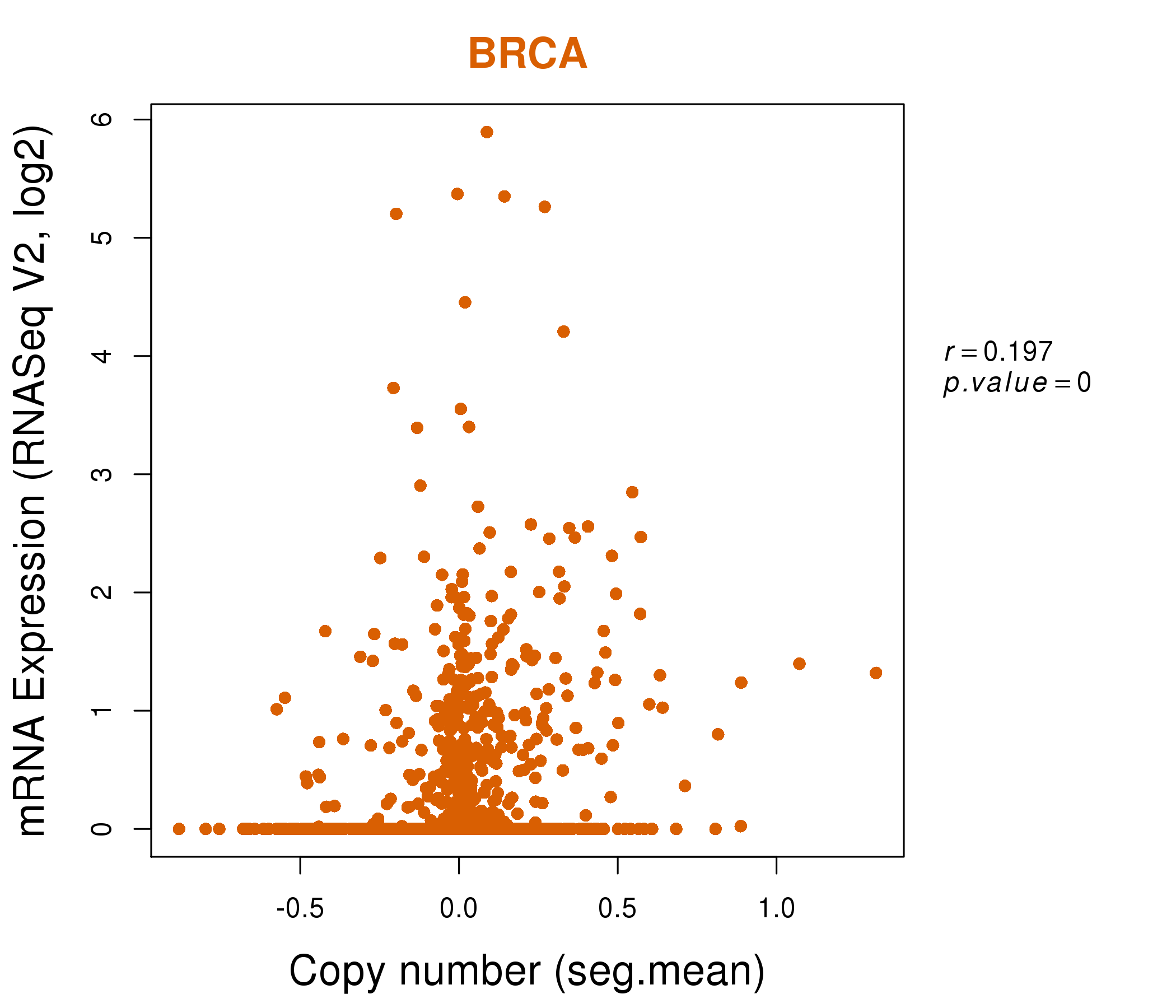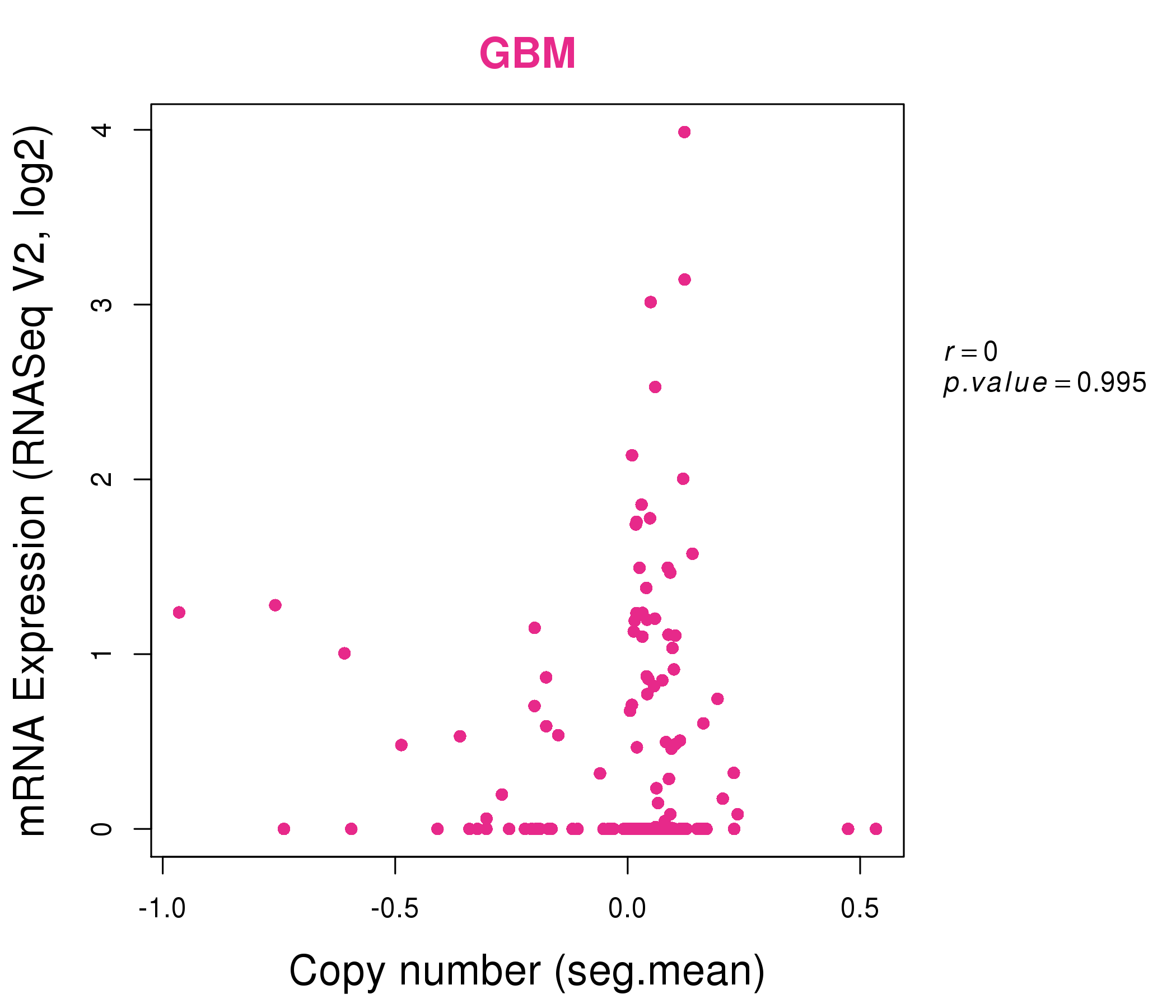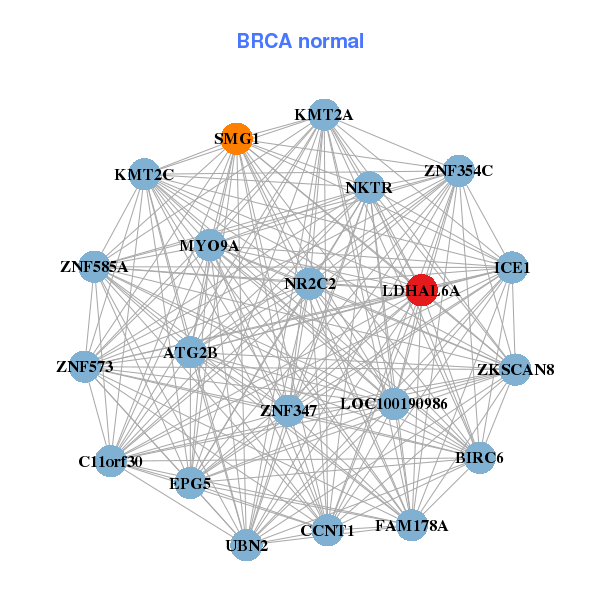|
||||||||||||||||||||
| |
| Phenotypic Information (metabolism pathway, cancer, disease, phenome) |
| |
| |
| Gene-Gene Network Information: Co-Expression Network, Interacting Genes & KEGG |
| |
|
| Gene Summary for LDHAL6A |
| Basic gene info. | Gene symbol | LDHAL6A |
| Gene name | lactate dehydrogenase A-like 6A | |
| Synonyms | LDH6A | |
| Cytomap | UCSC genome browser: 11p15.1 | |
| Genomic location | chr11 :18477373-18501147 | |
| Type of gene | protein-coding | |
| RefGenes | NM_001144071.1, NM_144972.4, | |
| Ensembl id | ENSG00000166800 | |
| Description | L-lactate dehydrogenase A-like 6A | |
| Modification date | 20141207 | |
| dbXrefs | HGNC : HGNC | |
| Ensembl : ENSG00000166800 | ||
| HPRD : 13980 | ||
| Vega : OTTHUMG00000167724 | ||
| Protein | UniProt: go to UniProt's Cross Reference DB Table | |
| Expression | CleanEX: HS_LDHAL6A | |
| BioGPS: 160287 | ||
| Gene Expression Atlas: ENSG00000166800 | ||
| The Human Protein Atlas: ENSG00000166800 | ||
| Pathway | NCI Pathway Interaction Database: LDHAL6A | |
| KEGG: LDHAL6A | ||
| REACTOME: LDHAL6A | ||
| ConsensusPathDB | ||
| Pathway Commons: LDHAL6A | ||
| Metabolism | MetaCyc: LDHAL6A | |
| HUMANCyc: LDHAL6A | ||
| Regulation | Ensembl's Regulation: ENSG00000166800 | |
| miRBase: chr11 :18,477,373-18,501,147 | ||
| TargetScan: NM_001144071 | ||
| cisRED: ENSG00000166800 | ||
| Context | iHOP: LDHAL6A | |
| cancer metabolism search in PubMed: LDHAL6A | ||
| UCL Cancer Institute: LDHAL6A | ||
| Assigned class in ccmGDB | C | |
| Top |
| Phenotypic Information for LDHAL6A(metabolism pathway, cancer, disease, phenome) |
| Cancer | CGAP: LDHAL6A |
| Familial Cancer Database: LDHAL6A | |
| * This gene is included in those cancer gene databases. |
|
|
|
|
|
|
| ||||||||||||||
Oncogene 1 | Significant driver gene in | |||||||||||||||||||
| cf) number; DB name 1 Oncogene; http://nar.oxfordjournals.org/content/35/suppl_1/D721.long, 2 Tumor Suppressor gene; https://bioinfo.uth.edu/TSGene/, 3 Cancer Gene Census; http://www.nature.com/nrc/journal/v4/n3/abs/nrc1299.html, 4 CancerGenes; http://nar.oxfordjournals.org/content/35/suppl_1/D721.long, 5 Network of Cancer Gene; http://ncg.kcl.ac.uk/index.php, 1Therapeutic Vulnerabilities in Cancer; http://cbio.mskcc.org/cancergenomics/statius/ |
| KEGG_GLYCOLYSIS_GLUCONEOGENESIS KEGG_CYSTEINE_AND_METHIONINE_METABOLISM KEGG_PYRUVATE_METABOLISM KEGG_PROPANOATE_METABOLISM | |
| Mutations for LDHAL6A |
| * Under tables are showing count per each tissue to give us broad intuition about tissue specific mutation patterns.You can go to the detailed page for each mutation database's web site. |
| - Statistics for Tissue and Mutation type | Top |
 |
| - For Inter-chromosomal Variations |
| There's no inter-chromosomal structural variation. |
| - For Intra-chromosomal Variations |
| * Intra-chromosomal variantions includes 'intrachromosomal amplicon to amplicon', 'intrachromosomal amplicon to non-amplified dna', 'intrachromosomal deletion', 'intrachromosomal fold-back inversion', 'intrachromosomal inversion', 'intrachromosomal tandem duplication', 'Intrachromosomal unknown type', 'intrachromosomal with inverted orientation', 'intrachromosomal with non-inverted orientation'. |
 |
| Sample | Symbol_a | Chr_a | Start_a | End_a | Symbol_b | Chr_b | Start_b | End_b |
| ovary | LDHAL6A | chr11 | 18500276 | 18500296 | LDHAL6A | chr11 | 18494055 | 18494075 |
| cf) Tissue number; Tissue name (1;Breast, 2;Central_nervous_system, 3;Haematopoietic_and_lymphoid_tissue, 4;Large_intestine, 5;Liver, 6;Lung, 7;Ovary, 8;Pancreas, 9;Prostate, 10;Skin, 11;Soft_tissue, 12;Upper_aerodigestive_tract) |
| * From mRNA Sanger sequences, Chitars2.0 arranged chimeric transcripts. This table shows LDHAL6A related fusion information. |
| ID | Head Gene | Tail Gene | Accession | Gene_a | qStart_a | qEnd_a | Chromosome_a | tStart_a | tEnd_a | Gene_a | qStart_a | qEnd_a | Chromosome_a | tStart_a | tEnd_a |
| T05071 | NAP1L1 | 1 | 188 | 12 | 76448818 | 76450247 | LDHAL6A | 188 | 378 | 11 | 18494786 | 18494974 | |
| Top |
| There's no copy number variation information in COSMIC data for this gene. |
| Top |
|
 |
| Top |
| Stat. for Non-Synonymous SNVs (# total SNVs=25) | (# total SNVs=8) |
 | 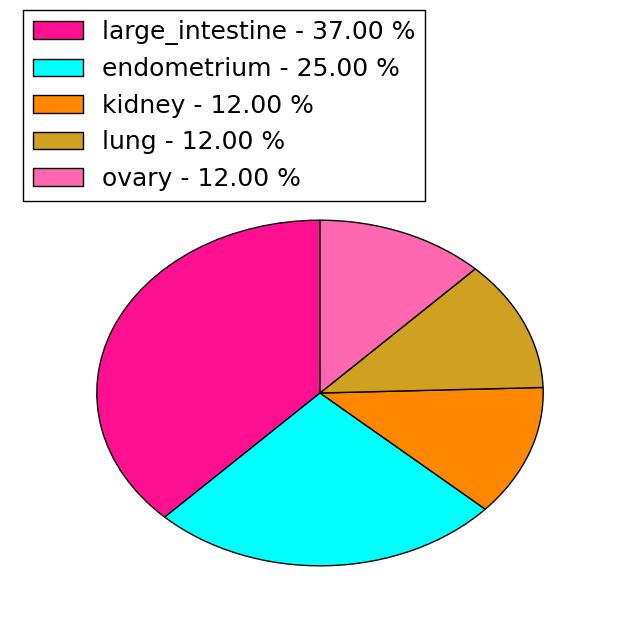 |
(# total SNVs=2) | (# total SNVs=2) |
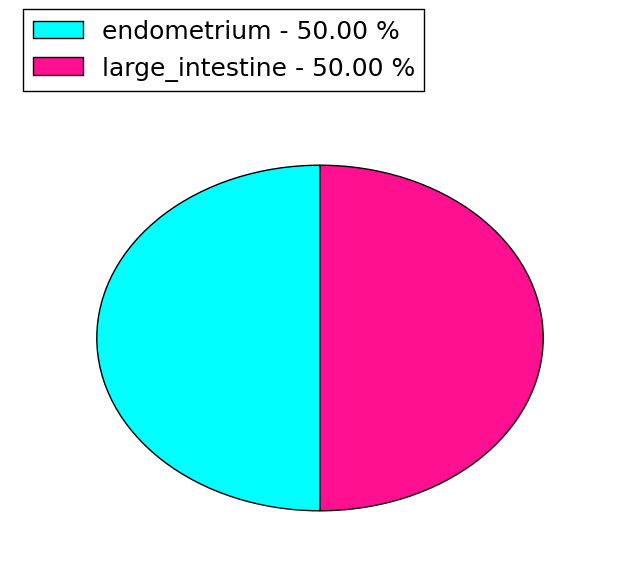 |  |
| Top |
| * When you move the cursor on each content, you can see more deailed mutation information on the Tooltip. Those are primary_site,primary_histology,mutation(aa),pubmedID. |
| GRCh37 position | Mutation(aa) | Unique sampleID count |
| chr11:18487305-18487305 | p.P122P | 2 |
| chr11:18497989-18497989 | p.D217D | 1 |
| chr11:18478306-18478306 | p.G27R | 1 |
| chr11:18500388-18500388 | p.W324R | 1 |
| chr11:18485579-18485579 | p.Q66Q | 1 |
| chr11:18497053-18497053 | p.F153F | 1 |
| chr11:18497990-18497990 | p.I218L | 1 |
| chr11:18478307-18478307 | p.G27E | 1 |
| chr11:18487239-18487239 | p.Q100H | 1 |
| chr11:18497057-18497057 | p.N156fs*33 | 1 |
| Top |
|
 |
| Point Mutation/ Tissue ID | 1 | 2 | 3 | 4 | 5 | 6 | 7 | 8 | 9 | 10 | 11 | 12 | 13 | 14 | 15 | 16 | 17 | 18 | 19 | 20 |
| # sample | 1 | 4 | 1 | 3 | 2 | 1 | 3 | 1 | 8 | |||||||||||
| # mutation | 1 | 4 | 1 | 4 | 2 | 1 | 4 | 1 | 9 | |||||||||||
| nonsynonymous SNV | 1 | 3 | 1 | 3 | 2 | 3 | 7 | |||||||||||||
| synonymous SNV | 1 | 1 | 1 | 1 | 1 | 2 |
| cf) Tissue ID; Tissue type (1; BLCA[Bladder Urothelial Carcinoma], 2; BRCA[Breast invasive carcinoma], 3; CESC[Cervical squamous cell carcinoma and endocervical adenocarcinoma], 4; COAD[Colon adenocarcinoma], 5; GBM[Glioblastoma multiforme], 6; Glioma Low Grade, 7; HNSC[Head and Neck squamous cell carcinoma], 8; KICH[Kidney Chromophobe], 9; KIRC[Kidney renal clear cell carcinoma], 10; KIRP[Kidney renal papillary cell carcinoma], 11; LAML[Acute Myeloid Leukemia], 12; LUAD[Lung adenocarcinoma], 13; LUSC[Lung squamous cell carcinoma], 14; OV[Ovarian serous cystadenocarcinoma ], 15; PAAD[Pancreatic adenocarcinoma], 16; PRAD[Prostate adenocarcinoma], 17; SKCM[Skin Cutaneous Melanoma], 18:STAD[Stomach adenocarcinoma], 19:THCA[Thyroid carcinoma], 20:UCEC[Uterine Corpus Endometrial Carcinoma]) |
| Top |
| * We represented just top 10 SNVs. When you move the cursor on each content, you can see more deailed mutation information on the Tooltip. Those are primary_site, primary_histology, mutation(aa), pubmedID. |
| Genomic Position | Mutation(aa) | Unique sampleID count |
| chr11:18485532 | p.L295L,LDHAL6A | 1 |
| chr11:18497989 | p.Q100H,LDHAL6A | 1 |
| chr11:18500402 | p.K305Q,LDHAL6A | 1 |
| chr11:18485579 | p.R106H,LDHAL6A | 1 |
| chr11:18497990 | p.W324L,LDHAL6A | 1 |
| chr11:18487239 | p.D108Y,LDHAL6A | 1 |
| chr11:18498018 | p.Q327K,LDHAL6A | 1 |
| chr11:18487256 | p.P129L,LDHAL6A | 1 |
| chr11:18498021 | p.K328K,LDHAL6A | 1 |
| chr11:18487261 | p.H130D,LDHAL6A | 1 |
| * Copy number data were extracted from TCGA using R package TCGA-Assembler. The URLs of all public data files on TCGA DCC data server were gathered on Jan-05-2015. Function ProcessCNAData in TCGA-Assembler package was used to obtain gene-level copy number value which is calculated as the average copy number of the genomic region of a gene. |
 |
| cf) Tissue ID[Tissue type]: BLCA[Bladder Urothelial Carcinoma], BRCA[Breast invasive carcinoma], CESC[Cervical squamous cell carcinoma and endocervical adenocarcinoma], COAD[Colon adenocarcinoma], GBM[Glioblastoma multiforme], Glioma Low Grade, HNSC[Head and Neck squamous cell carcinoma], KICH[Kidney Chromophobe], KIRC[Kidney renal clear cell carcinoma], KIRP[Kidney renal papillary cell carcinoma], LAML[Acute Myeloid Leukemia], LUAD[Lung adenocarcinoma], LUSC[Lung squamous cell carcinoma], OV[Ovarian serous cystadenocarcinoma ], PAAD[Pancreatic adenocarcinoma], PRAD[Prostate adenocarcinoma], SKCM[Skin Cutaneous Melanoma], STAD[Stomach adenocarcinoma], THCA[Thyroid carcinoma], UCEC[Uterine Corpus Endometrial Carcinoma] |
| Top |
| Gene Expression for LDHAL6A |
| * CCLE gene expression data were extracted from CCLE_Expression_Entrez_2012-10-18.res: Gene-centric RMA-normalized mRNA expression data. |
 |
| * Normalized gene expression data of RNASeqV2 was extracted from TCGA using R package TCGA-Assembler. The URLs of all public data files on TCGA DCC data server were gathered at Jan-05-2015. Only eight cancer types have enough normal control samples for differential expression analysis. (t test, adjusted p<0.05 (using Benjamini-Hochberg FDR)) |
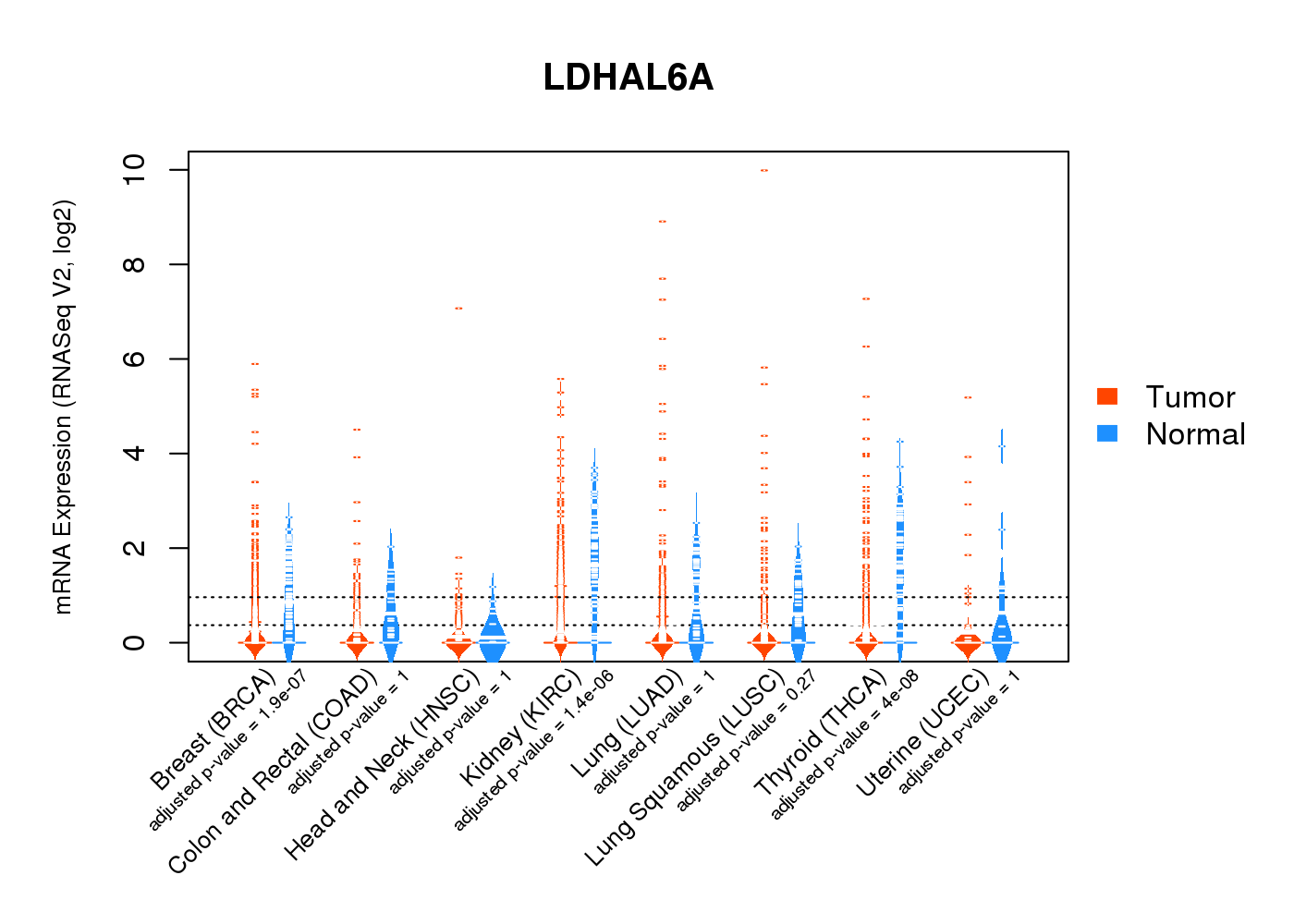 |
| Top |
| * This plots show the correlation between CNV and gene expression. |
: Open all plots for all cancer types
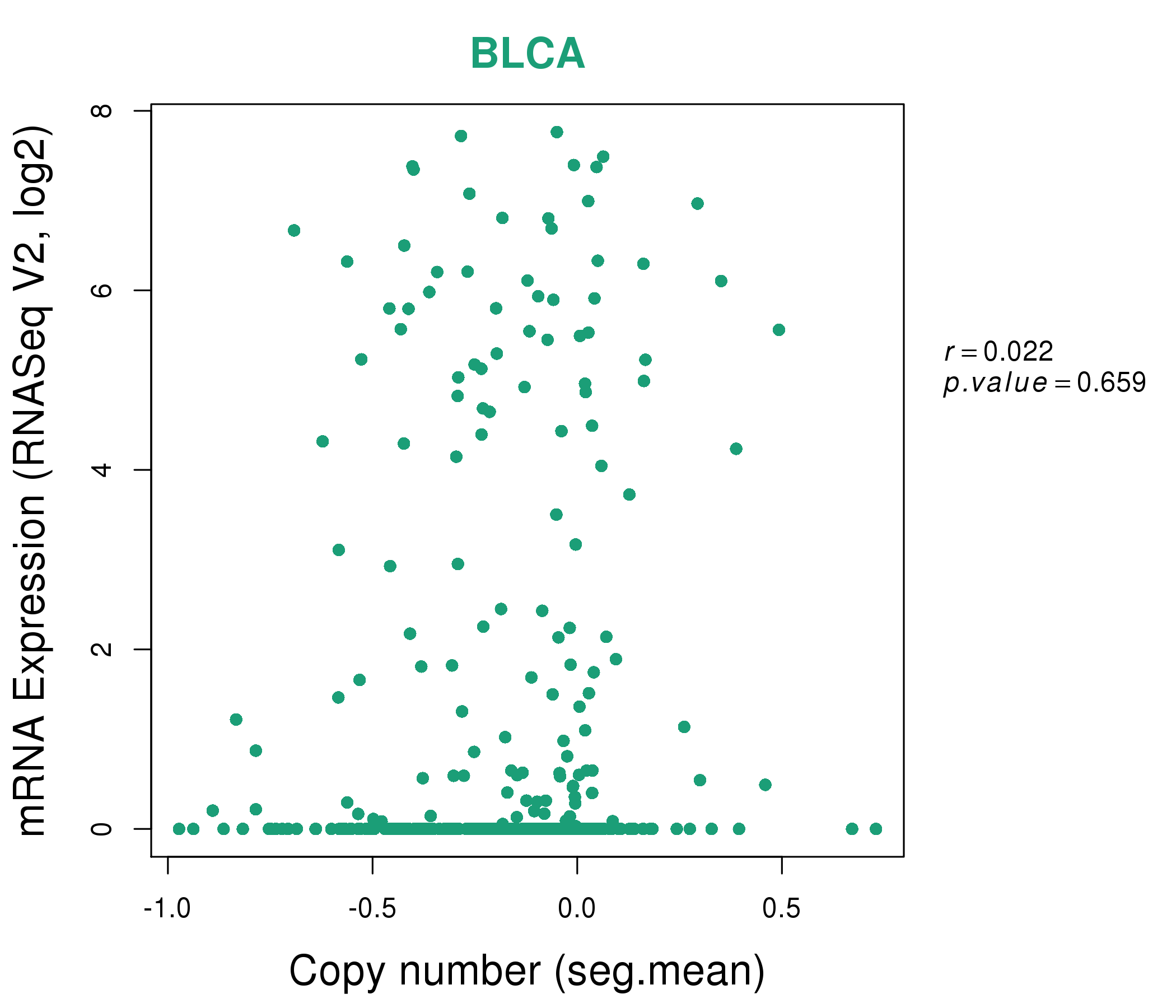 |
|
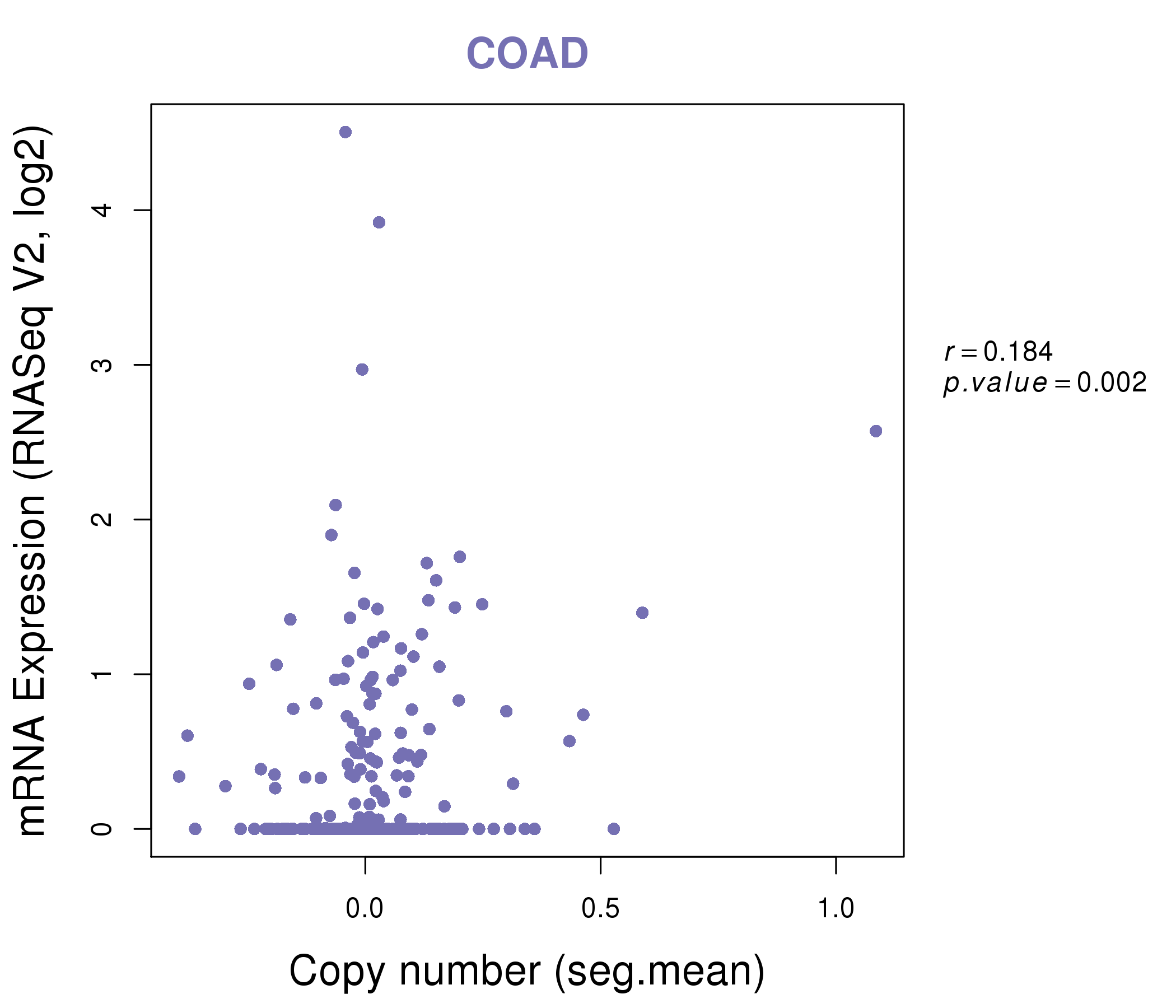 |
|
| Top |
| Gene-Gene Network Information |
| * Co-Expression network figures were drawn using R package igraph. Only the top 20 genes with the highest correlations were shown. Red circle: input gene, orange circle: cell metabolism gene, sky circle: other gene |
: Open all plots for all cancer types
 |
| ||||
| ANKRD33,ANKRD55,ANPEP,FAM217A,CNGA3,TXLNGY,FAM41AY1, FOXI2,GRK1,KRT82,LDHAL6A,LRRC3B,NCRNA00185,NETO2, NOBOX,NT5C1B,POU5F1B,RAB40A,RGAG1,TNFSF11,ZNF486 | ATG2B,BIRC6,C11orf30,CCNT1,FAM178A,ICE1,EPG5, LDHAL6A,LOC100190986,KMT2C,KMT2A,MYO9A,NKTR,NR2C2, SMG1,UBN2,ZKSCAN8,ZNF347,ZNF354C,ZNF573,ZNF585A | ||||
 |
| ||||
| ASB18,LINC01565,TOPAZ1,CST9,F7,FATE1,FBLL1, GK,GK3P,GRIN2C,LDHAL6A,DNMBP-AS1,LINC00114,NKPD1, OPCML,PER4,POLM,PRG3,SLC45A2,SOX30,ZMAT1 | AGAP4,BMS1P5,MSANTD2,MROH7,N4BP2L2-IT2,CREBZF,GABRE, PAXBP1,GHRLOS,GK5,LDHAL6A,LOC100128842,LOC256880,LOC646471, MDM4,PROCA1,TAS2R5,CFAP44,WDR59,ZNF587,ZNF841 |
| * Co-Expression network figures were drawn using R package igraph. Only the top 20 genes with the highest correlations were shown. Red circle: input gene, orange circle: cell metabolism gene, sky circle: other gene |
: Open all plots for all cancer types
| Top |
: Open all interacting genes' information including KEGG pathway for all interacting genes from DAVID
| Top |
| Pharmacological Information for LDHAL6A |
| DB Category | DB Name | DB's ID and Url link |
| * Gene Centered Interaction Network. |
 |
| * Drug Centered Interaction Network. |
| DrugBank ID | Target Name | Drug Groups | Generic Name | Drug Centered Network | Drug Structure |
| DB00157 | lactate dehydrogenase A-like 6A | approved; nutraceutical | NADH |  | 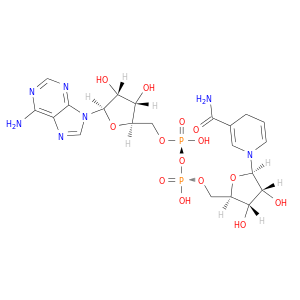 |
| Top |
| Cross referenced IDs for LDHAL6A |
| * We obtained these cross-references from Uniprot database. It covers 150 different DBs, 18 categories. http://www.uniprot.org/help/cross_references_section |
: Open all cross reference information
|
Copyright © 2016-Present - The Univsersity of Texas Health Science Center at Houston @ |






